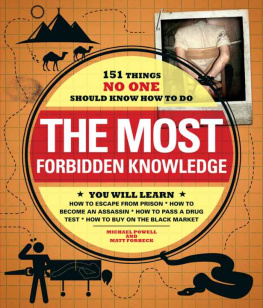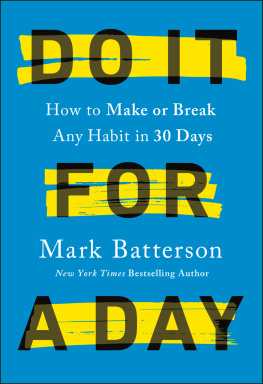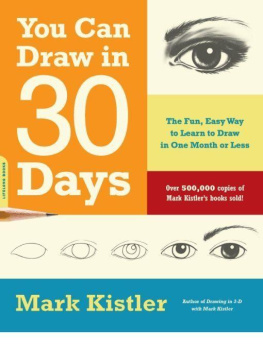
Fall River Press and the distinctive Fall River Press logo
are registered trademarks of Barnes & Noble, Inc.
2006 by Gusto Company AS
Designed by Allen Boe
Illustrations by Allen Boe, Dover Pictorial Archives Series
Photography by Getty Images
All rights reserved. No part of this publication may be reproduced, stored in a retrieval system, or transmitted, in any form or by any means, electronic, mechanical, photocopying, recording, or otherwise, without prior written permission from the publisher.
ISBN 978-1-4351-3904-6 (e-book)
1 3 5 7 9 10 8 6 4 2
For information about custom editions, special sales, and premium and corporate purchases, please contact Sterling Special Sales at 800-805-5489 or specialsales@sterlingpublishing.com
www.sterlingpublishing.com
Introduction
George Bernard Shaw was wrong when he said that we learn nothing from history. After all, the ancient used to be the modern; it is only the distance of time which separates it from us. Our modern gadgets and gizmos have helped to isolate us from vital skills that were commonplace for our ancestors, and handed down through countless generations, providing the link to our past and the bridge to our futureexpertise that is now all but forgotten.
History has plenty to teach us. Thats why this book is essential for anyone who is even mildly curious about the cutting edge of all things old-fashioned. Its an absolutely essential collection of timeworn and, on occasion, almost protohistoric adviceeverything you need to start coping with the hardships of way back when.
Would you know what to do if someone challenged you to pistols at dawn, or asked you to milk their cow? Have you ever wondered how to thatch a roof, pluck a chicken, or make a quill pen. How will you fare the next time you have to chop down a tree with an ax or lay siege to a castle? For the romantics among you, this book even shows you how to write a proper sonnet.
So, put down your cell phone and take a tripway down memory laneto a time when men were men, leeches were the vanguard of modern medicine, and carving your own canoe was just another domestic chore.

Use A Bow And Arrow
In essence, shooting a bow and arrow is simply using the tension of a string to propel a thin shaft with a pointed head at one end, and flight-stabilizing vanes at the other, through the air at high speed to hit a target. In fact, developing your archery skills to the point where you can hit bulls-eyes time after time takes years of practice and perfect technique.
Imagine a line drawn from you to the target. This is your shooting line.
A person who is right-eye dominant should hold the bow in the left hand; those who are left-eye dominant should hold the bow in the right hand.
Stand in a comfortable, relaxed position with the toes of both feet on the shooting line, feet shoulder-width apart, and weight spread evenly. Sometimes, an open stance is used by opening the front foot and placing the back foot on the shooting line.
Place the nock of the arrow firmly onto the bowstring, just above your handgrip. Make sure that the index fletch on the arrow points away from the bow. Place the arrow shaft onto the arrow rest.
Place your index finger above and second and third fingers below the arrow nock. Curl the fingers around the bowstring so that the first joint of all three fingers are in line. Keep the back of your hand as flat as possible and tuck your thumb into your palm.
Place the bow hand into the grip of the bow with the center line of the V between thumb and index finger. Keep your arm locked straight, with your elbow rolled slightly out.
Lift your head and address the target. Push out with the bow arm, and then raise both arms together into the firing position. Draw the string back until your thumb is against your neck, your index finger is firmly placed against the jaw, and the bowstring is touching chin and nose. Keep the front shoulder in its normal position, and the drawing elbow high, to engage your powerful back muscles. The position of the head and body should not move.
Move the bow arm to aim. The bowstring and edge of the bow should be parallel. If not, the bow is tilted away from vertical.
To release the arrow, all three fingers must slip off the bowstring at the same time.
Follow through: when performed correctly, your hand should move backward, as the back muscles pull the arm back and the fingers come to rest beside the neck. Hold the position of the bow arm, head, and body until the arrow hits the target.
WARNING
Archery is dangerous. Seek proper training and equipment before attempting this activity. Shoot only on a safe archery range, and ensure no one is in front of you before you shoot.

Load And Fire A Musket
During drill practice an infantryman was expected to load and fire his musket between three and four times every minute. You should be able to load the gun without looking, keeping your eyes firmly fixed on the approaching enemy.
When your commander shouts Recover arms, bring the musket upright in front of your left shoulder, with the lock at eye level.
Supporting the musket in your right hand, quickly check that the lock is secure, clean, and functional.
Lower the musket from your shoulder, place the butt on the ground between your feet, and hold the barrel with your left hand, about an arms-length from your body.
Take a cartridge from your cartridge box (usually kept on the right side of your body). This is a paper cylinder containing the gunpowder and ball.
Open the cartridge by tearing the end off with your teeth. Tip the powder into the end of the barrel, followed by the ball.
Draw the ramrod from the pipe, insert it into the muzzle, and press the powder and ball to the bottom of the barrel. Lift the ramrod again about six inches and flick it down the barrel so that the ball sits firmly on the powder.

Replace the ramrod in the pipe.
Raise your musket to eye level and half-cock it using your thumb. Take a conical copper percussion cap from your cap pouch and place it on the cone at the breech end of the gun (this cap contains a small amount of fulminate of mercury, which explodes on impact to ignite the gunpowder).
Use your right thumb to cock the weapon fully.
Place the butt of the musket firmly against your shoulder; place your right cheek against the comb of the butt, take aim, and fire.

Duel With Pistols
A duel of honor was a way of settling a dispute or quarrel between gentlemen. It usually involved swords or pistols, and took place within forty-eight hours of the challenge, often at dawn.
If you are challenged to a duel, the offended party will demand satisfaction from you, accompanied by an insulting gesture such as a slap in the face; or, he may throw his gauntlet (glove) down in front of you. If you reject the challenge you will dishonor yourself.
Next page




















